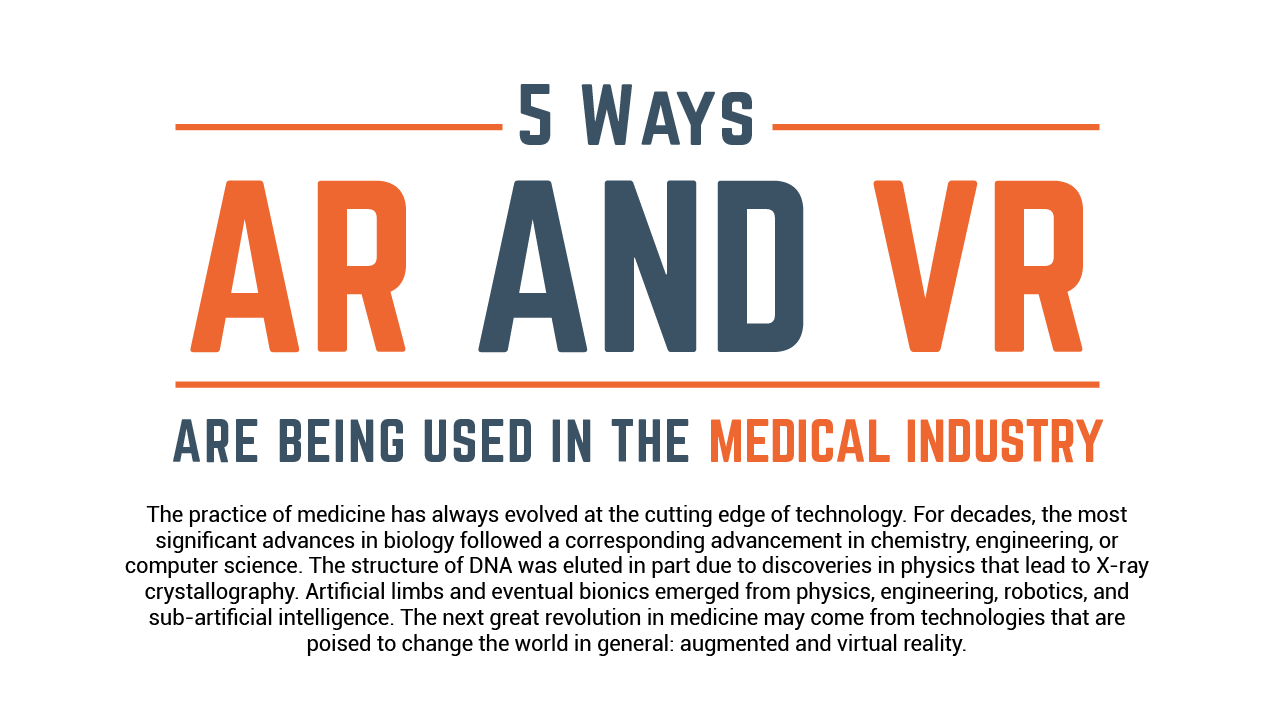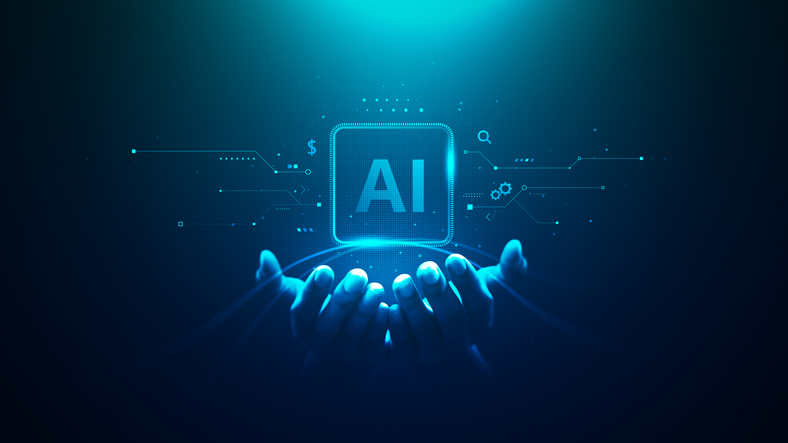

The practice of medicine has always evolved at the cutting edge of technology. For decades, the most significant advances in biology followed a corresponding advancement in chemistry, engineering, or computer science. The structure of DNA was eluted in part due to discoveries in physics that lead to X-ray crystallography. Artificial limbs and eventual bionics emerge from physics, engineering, robotics, and sub-artificial intelligence. The next great revolution in medicine may come from technologies that are poised to change the world in general: augmented and virtual reality.
What is AR and VR?
Augmented Reality (AR)
- Augmented reality enhances reality by overlaying data and/or images over the top of the real world, creating a composite image of the two. This is usually done with a cellphone camera and screen or imaging eyewear.
Virtual Reality (VR)
- Virtual reality is the creation of a computer-generated, fully immersive artificial environment with which a user can interact. Wraparound sealed goggles or a full helmet must be worn, and haptics are sometimes used with sensor-laden gloves.
Five ways AR and VR will impact medicine
AR and VR are set to revolutionize the practice and delivery of medicine. The following five examples are only a few of the ways the new technology will create change.
- Medical Education
- One of the challenges of medical education has been the inability to practice skills in a setting that is realistic but does not have real-world consequences.
- AR and VR allow for immersive training simulations that are real enough to create actual stress in the students similar to what they might feel in an actual crisis.
- The uses are numerous; surgical simulation, Emergency Department scenarios, virtual anatomy labs, etc.
- Augmented Reality Overlays During Surgery
- Despite incredible levels of training and subsequent skill, the difficulty in identifying structures and pathologies in real time leads to surgical errors.
- AR overlays of imaging, real-time scans, patient telemetry, and detailed real-time anatomy can provide surgeons with crucial advantages that might reduce surgical errors.
- The provision of this kind of heads up display allows the surgeon to access data without looking away from the surgical field.
- Use of Virtual Reality in Mental Health
- Much of current mental health practice is focused on retraining maladaptive responses to specific trigger events, but it is difficult to provide in-office simulations of triggers. Patients often cannot work on their responses in a safe, controlled environment.
- Virtual reality helps solve this problem by creating immersive simulations of trigger events while the patient is safe and secure in the office.
- Exposure therapy, which is used for specific phobias, can be practiced via VR, as can skill practices for social interactions.
- Augmented Reality in Primary Care
- Even some of the most ubiquitous activities in health care can be enhanced by AR.
- AR overlays can help nurses and medical technicians locate veins using a hand-held device that pinpoints their location under the skin, reducing sticks and the time it takes to draw blood or place lines.
- DO, MD, PA, and APRN can use a heads-up display to access a patient’s medical records without having to turn away from the patient to use a computer. Remote scribe services are already in use, further enhancing the patient experience by allowing the physician to focus on the patient while someone else updates the patient’s medical records.
- Augmented Reality in Public Spaces
- AR can help normal citizens locate medical services in public spaces that might otherwise be difficult to find.
- Important resources such as Automated External Defibrillators can be highlighted, and the nearest available medical services can be accessed, providing an option to order transport to the nearest hospital without activating the 911 system.
Technology and medicine evolve in-step, one with the other. AR and VR are expected to have an enormous impact on the practice of medicine. Although each newly introduced AR and VR tool will require training, the benefits will outweigh the time investment.







 © 2025 Mashup Media, LLC, a Formedics Property. All Rights Reserved.
© 2025 Mashup Media, LLC, a Formedics Property. All Rights Reserved.